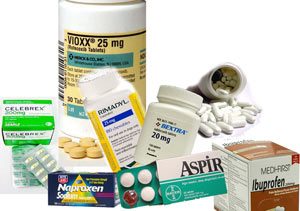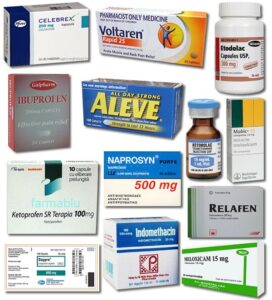Uncategorized
Pain Relievers
What are Pain Relievers drugs?
A pain-relieving or painkiller is any individual from the gathering of medications used to accomplish the absence of pain, help from torment. Pain-relieving drugs act in different manners on the peripheral and central nervous frameworks. They are particular from anesthetics, which briefly influence, and in certain occurrences totally eliminate sensation. Analgesics include paracetamol (known in North America as acetaminophen or just APAP), nonsteroidal calming drugs (NSAIDs, for example, the salicylates, and opioid drugs such as morphine and oxycodone.




While picking analgesics, the seriousness and reaction to different prescriptions decide the decision of the specialist; the World Health Organization (WHO) torment stepping stool indicates mellow analgesics as its initial step.
A pain-relieving decision is additionally controlled by the kind of torment: For neuropathic torment, customary analgesics are less powerful, and there is a regular advantage from classes of medications that are not ordinarily thought about analgesics, for example, tricyclic antidepressants and anticonvulsants.


Types (Classes) of Pain Medication
Pain medications are drugs used to relieve discomfort associated with diseases, injury, or surgery. Because the pain process is complex, there are many types of pain drugs that provide relief by acting through a variety of physiological mechanisms. Thus, effective medication for nerve pain will likely have a different mechanism of action than arthritis pain medication.
- Nonsteroidal anti-inflammatory drugs (NSAIDs) act on substances in the body that can cause inflammation, pain, and fever.
- Corticosteroids are often administered as an injection at the site of musculoskeletal injuries. They exert powerful anti-inflammatory effects. They can also be taken orally to relieve pain from, for example, arthritis.
- Acetaminophen increases the body’s pain threshold, but it has little effect on inflammation.
- Opioids, also known as narcotic analgesics, modify pain messages in the brain.
- Muscle relaxants reduce pain from tense muscle groups, most likely through sedative action in the central nervous system.
- Anti-anxiety drugs work on pain in three ways: they reduce anxiety, they relax muscles, and they help patients cope with discomfort.
- Some antidepressants, particularly the tricyclics, may reduce pain transmission through the spinal cord.
- Some anticonvulsant drugs also relieve the pain of neuropathies, possibly by stabilizing nerve cells.
The strongest Pain Medications
The strongest pain medications are in the world are;
- Morphine
Morphine is a pain medication of the opiate family that is found naturally in a number of plants and animals, including humans. It acts directly on the central nervous system to decrease the feeling of pain.
- Fentanyl
Fentanyl, also spelled fentanil, is an opioid used as a pain medication and together with other medications for anesthesia. Fentanyl is also used as a recreational drug, often mixed with heroin or cocaine. It has a rapid onset and its effects generally last less than two hours.
- Oxycodone
Oxycodone, sold under the brand name OxyContin among others, is an opioid medication used for the treatment of moderate to severe pain, and a common drug of abuse. It is usually taken by mouth and is available in immediate-release and controlled-release formulations
- Buprenorphine
Buprenorphine, sold under the brand name Subutex, among others, is an opioid used to treat opioid use disorder, acute pain, and chronic pain. It can be used under the tongue, in the cheek, by injection, as a skin patch, or as an implant
- Diamorphine
Type of medicine, Strong opioid painkiller. Used for, Severe pain. Also called, Diacetylmorphine (in the US).
- Hydromorphone
Hydromorphone, also known as dihydromorphinone, and sold under the brand name Dilaudid among others, is an opioid used to treat moderate to severe pain. Typically, long-term use is only recommended for pain due to cancer. It may be used by mouth or by injection into a vein, muscle, or under the skin.
- Methadone
Methadone, sold under the brand names Dolophine and Methadose among others, is an opioid used for opioid maintenance therapy in opioid dependence and for chronic pain management. Detoxification using methadone can be accomplished in less than a month, or it may be done gradually over as long as six months
- Propoxyphene
Dextropropoxyphene is an analgesic in the opioid category, patented in 1955 and manufactured by Eli Lilly and Company. It is an optical isomer of levopropoxyphene. It is intended to treat mild pain and also has antitussive and local anesthetic effects.
Side Effects of Pain Medications
- NSAIDs
All NSAIDs come with the risk of gastrointestinal ulceration and bleeding. A newer class of anti-inflammatories, the COX-2 inhibitors, was developed to reduce this risk. It did not, though, eliminate it. In fact, another major issue emerged with these drugs: the possibility of severe and deadly vascular problems with long-term use, including heart attack and stroke.
- Acetaminophen
Most users of acetaminophen experience few, if any, side effects. But the drug can cause liver damage, especially when taking too much or if taken with alcohol.
- Opioids
Opioid analgesics commonly cause drowsiness, dizziness, and respiratory depression. However, these side effects usually disappear with continued use. However, constipation, another common side effect, tends to persist. In addition, opioid use may lead to addiction or dependence. Other possible side effects of opioid analgesics include:
- Euphoria, dysphoria, agitation, seizures, hallucinations
- Lowered blood pressure and heart rate
- Muscular rigidity and contractions
- Nausea and vomiting
- Non-allergic itching
- Pupil constriction
- Sexual dysfunction
- Urinary retention
- Mixed opioid agonist-antagonists
Patients can experience symptoms of opioid withdrawal if a straight opioid analgesic, such as morphine, is taken at the same time as an opioid agonist-antagonist drug. Some of these medications include pentazocine (Talwin Nx, Talacen, Talwin Compound), butorphanol, and nalbuphine (Nubain).
- Muscle relaxants
The main side effect of muscle relaxants is drowsiness. This may be how they work to “relieve” pain. In addition, carisoprodol (Soma) use may lead to dependence because in the body it is converted into a drug similar to barbiturates; cyclobenzaprine (Flexeril) can cause dry mouth, constipation, confusion, and loss of balance; methocarbamol (Robaxin) discolors the urine to green, brown, or black; both metaxalone (Skelaxin) and chlorzoxazone (Parafon Forte, DSC) should be used with caution in those with liver problems.
- Anti-anxiety agents
Anti-anxiety drugs also carry the risk of sedation, particularly if combined with certain other medications (such as opioid analgesics) or alcohol. Other possible side effects include psychological changes, headache, nausea, visual problems, restlessness, and nightmares. Chest pain and heart-pounding are also possible.
- Antidepressants
Some of the antidepressants used for pain relief are the older tricyclics. These come with numerous side effects classified as anticholinergic, including dry mouth, difficulty urinating, blurred vision, and constipation. Other possible side effects include lower blood pressure, fast heartbeat, palpitations, weight gain, and fatigue.
A few of the newer antidepressants also reduce pain — and with less risk of anticholinergic issues. Still, the serotonin-norepinephrine reuptake inhibitors (SNRIs) may cause the following common side effects:
- Anorexia
- Asthenia
- Constipation
- Dizziness
- Dry mouth
- Ejaculatory difficulties
- Headache
- Insomnia
- Nausea
- Nervousness
- Sweating
- Antiseizure agents
Side effects associated with the anticonvulsants used for pain management commonly disappear over time. They include dizziness, drowsiness, and swelling of the lower extremities.
- Corticosteroids
In general, short-term and/or low-dose corticosteroid use results in few side effects. But taking corticosteroids long-term can result in severe side effects, including:
- Adrenal insufficiency — a condition in which the body cannot adequately respond to physical stress
- Atherosclerosis
- Bone death
- Cataracts and glaucoma
- Elevated blood pressure
- Elevated blood sugar
- Fluid retention
- Gastrointestinal bleeding
- Mood changes
- Osteoporosis
- Suppression of the immune system
- Trouble sleeping
- Weight gain
- Damage to local tissues

